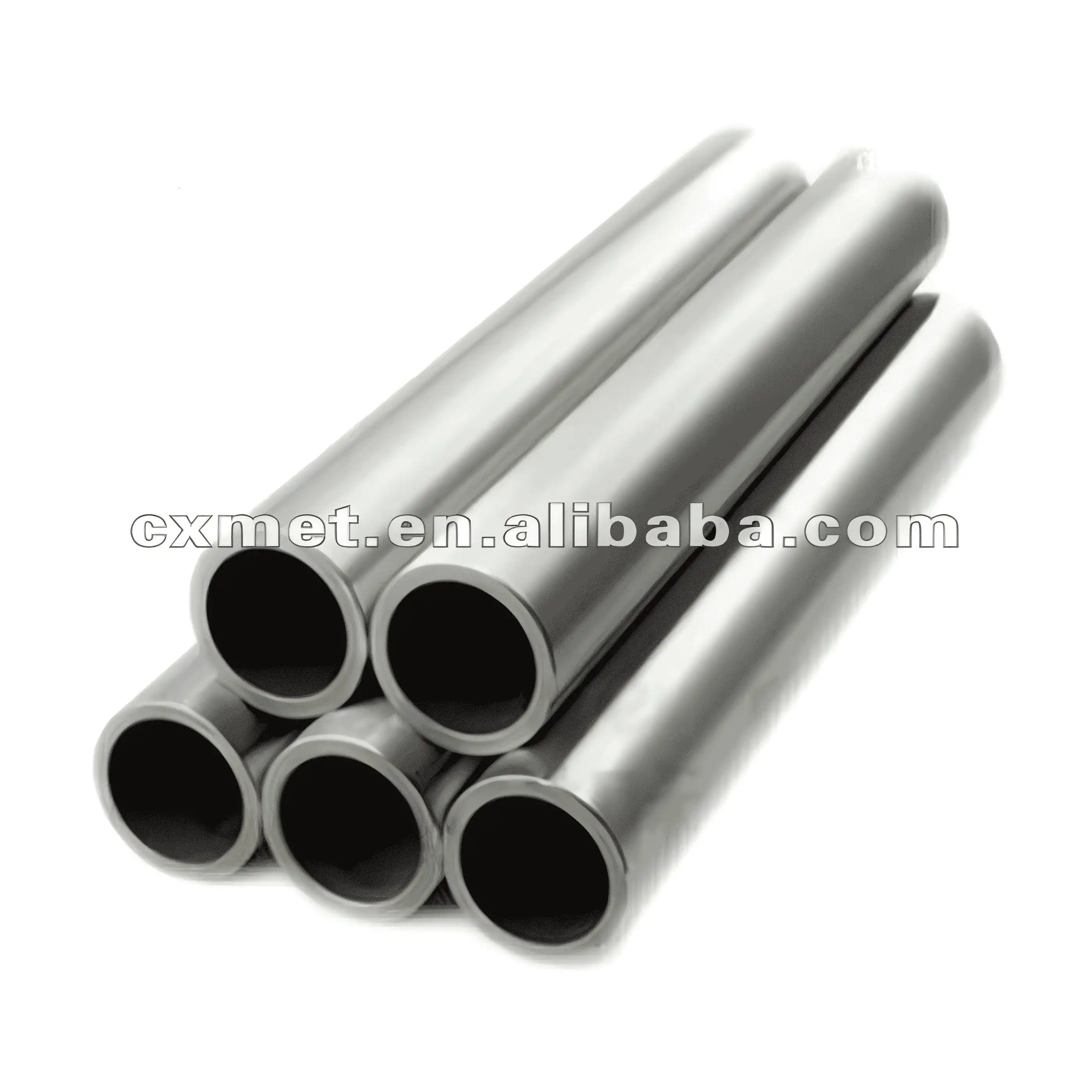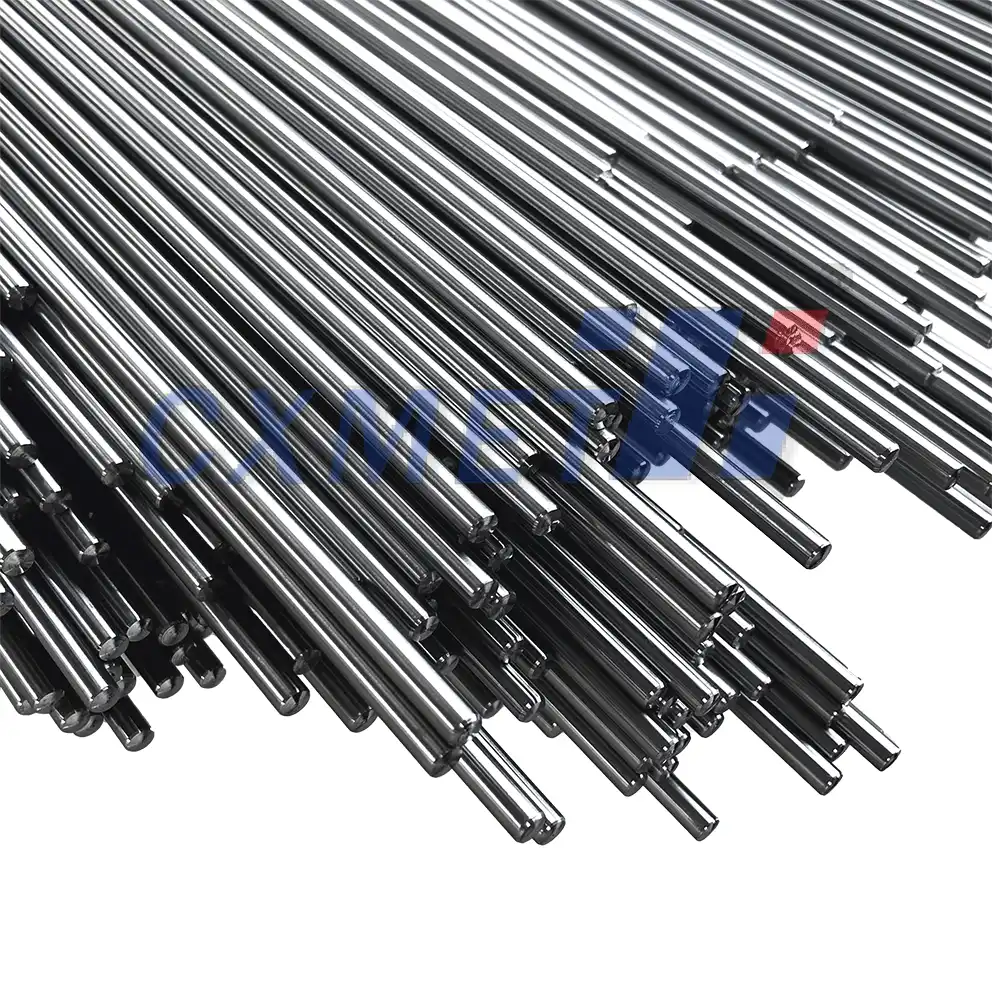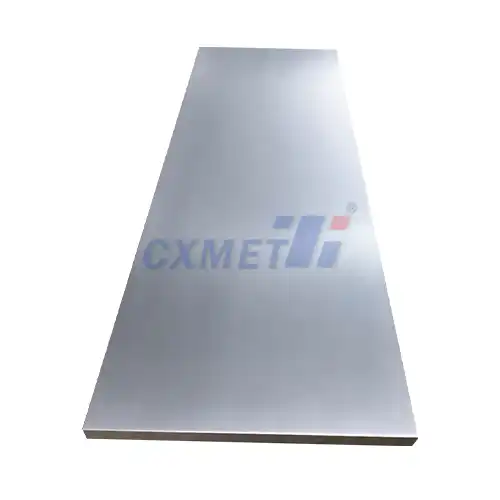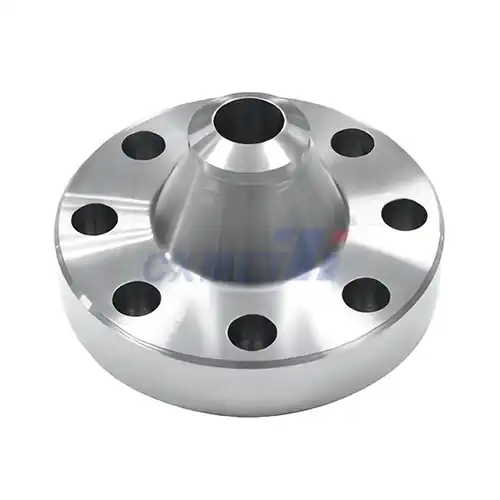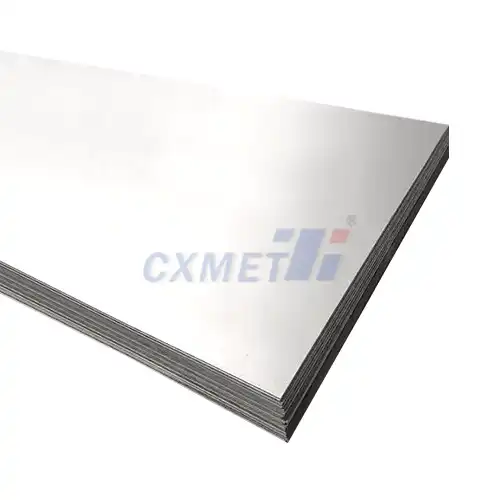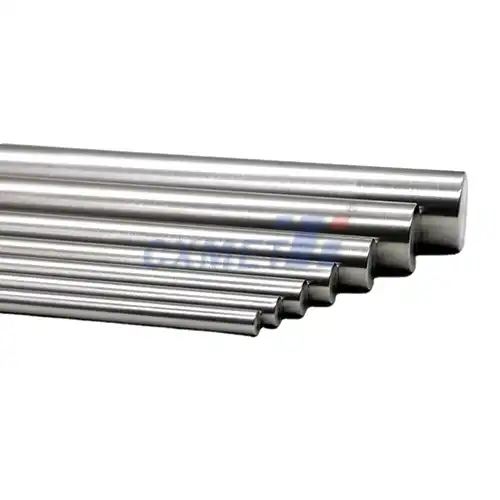What are the main steps in niobium tube production?
The production of niobium tubes involves several crucial steps, each contributing to the final product's quality and performance. The process typically begins with the extraction and purification of niobium from its ores, followed by the creation of niobium ingots or billets. These raw materials are then transformed into tubes through various methods, depending on the desired specifications and end-use applications.
The main steps in niobium tube production include:
- Raw material preparation: Niobium ores, primarily pyrochlore and columbite, are processed to extract pure niobium. This involves techniques such as chemical separation, electrolytic refining, and electron beam melting to achieve high purity levels.
- Ingot or billet formation: The purified niobium is melted and cast into ingots or billets, which serve as the starting material for tube production. These ingots are typically created using vacuum arc remelting (VAR) or electron beam melting (EBM) techniques to ensure uniform composition and minimize impurities.
- Primary forming: The niobium ingots or billets are then subjected to primary forming processes, such as extrusion or piercing, to create a hollow cylindrical shape. This step involves heating the material to temperatures around 1000°C to 1200°C to improve its malleability.
- Secondary forming: The rough tube shape undergoes further refinement through processes like drawing, rolling, or swaging. These techniques help achieve the desired dimensions, wall thickness, and surface finish.
- Heat treatment: Niobium tubes often undergo heat treatment processes, such as annealing or stress relieving, to optimize their mechanical properties and microstructure.
- Surface finishing: The final step involves surface treatments like polishing, pickling, or passivation to enhance corrosion resistance and improve the overall appearance of the tubes.
Throughout the production process, strict quality control measures are implemented to ensure that the niobium tubes meet the required specifications and industry standards.
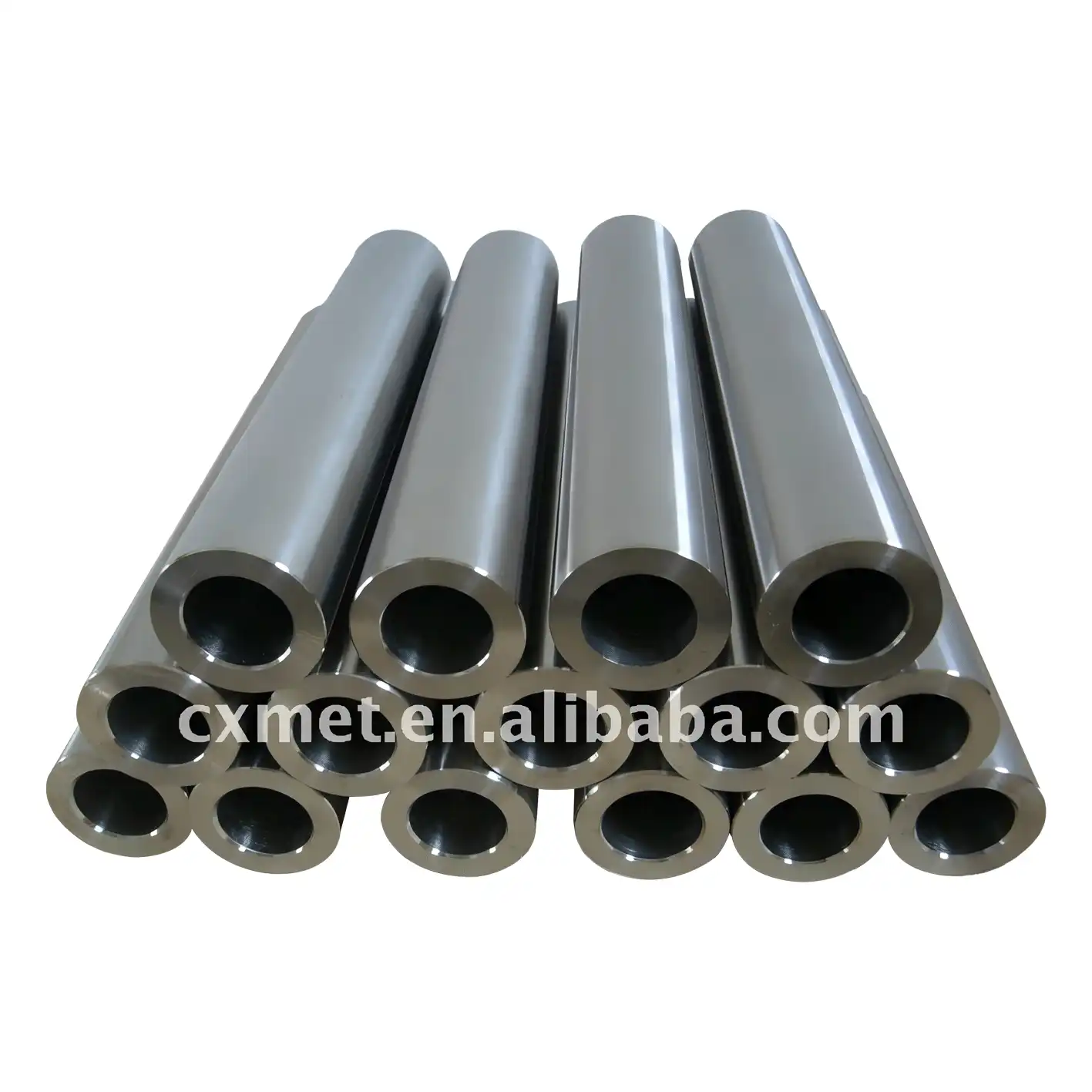
What are the different methods used to manufacture niobium tubes?
Several methods are employed in the manufacturing of niobium tubes, each with its own advantages and suitable applications. The choice of method depends on factors such as the desired tube dimensions, production volume, and end-use requirements. Some of the most common methods include:
- Extrusion: This method involves forcing a heated niobium billet through a die with a specific cross-sectional shape. Extrusion is particularly effective for producing long, straight tubes with consistent wall thickness. The process can be performed hot or cold, depending on the desired properties of the final product.
- Piercing: Also known as the Mannesmann process, piercing involves rotating a heated niobium billet while applying axial force using two angled rolls. This creates a hollow center, which is then expanded using a mandrel. Piercing is often used as an initial step in seamless tube production.
- Drawing: Tube drawing involves pulling a niobium tube through a series of dies with progressively smaller diameters. This process can be performed cold or hot and is excellent for achieving precise dimensions and smooth surface finishes. Drawing is often used in combination with other methods to produce high-quality niobium tubes.
- Rolling: Tube rolling is a process where a niobium tube is passed between rotating rollers that gradually reduce its diameter and wall thickness. This method is particularly useful for producing thin-walled tubes with tight tolerances.
- Pilgering: This specialized rolling process involves incrementally reducing the diameter and wall thickness of a tube using a reciprocating action. Pilgering is highly effective for producing long, thin-walled niobium tubes with excellent mechanical properties.
- Electron Beam Melting (EBM): While primarily used for creating niobium ingots, EBM can also be employed to produce near-net-shape tubes. This additive manufacturing technique uses an electron beam to selectively melt niobium powder layer by layer, allowing for the creation of complex geometries and internal structures.
Each of these methods has its own set of advantages and limitations, and manufacturers often combine multiple techniques to achieve the desired tube characteristics. The choice of method also depends on factors such as production volume, cost-effectiveness, and the specific requirements of the end application.
What are the challenges in niobium tube manufacturing?
The production of high-quality niobium tubes presents several challenges that manufacturers must overcome to ensure the final product meets the stringent requirements of various industries. Some of the key challenges in niobium tube manufacturing include:
- Material properties: Niobium has a high melting point (2,477°C) and is reactive at elevated temperatures, making it challenging to process using conventional metalworking techniques. This necessitates specialized equipment and expertise to handle the material effectively.
- Contamination control: Niobium is highly susceptible to contamination, particularly from interstitial elements like oxygen, nitrogen, and carbon. Even small amounts of these impurities can significantly affect the material's properties, especially its superconducting characteristics. Manufacturers must implement strict contamination control measures throughout the production process.
- Dimensional accuracy: Achieving tight tolerances and consistent wall thickness in niobium tubes can be challenging, particularly for thin-walled or small-diameter tubes. This requires precise control over the manufacturing process and advanced metrology techniques for quality assurance.
- Surface finish: Many applications, such as superconducting cavities, require niobium tubes with extremely smooth and defect-free surfaces. Achieving and maintaining such high-quality surface finishes throughout the production process can be difficult and may require specialized polishing and cleaning techniques.
- Cost and scalability: Niobium is a relatively expensive material, and the specialized equipment and processes required for tube manufacturing further increase production costs. Balancing cost-effectiveness with the need for high-quality products is an ongoing challenge for manufacturers.
- Heat treatment: Proper heat treatment is crucial for optimizing the mechanical and superconducting properties of niobium tubes. However, controlling the temperature, atmosphere, and cooling rates during heat treatment can be complex and requires extensive expertise.
- Joining and welding: Many applications require the joining of niobium tubes or the welding of niobium to other materials. The high reactivity and sensitivity to contamination of niobium make these processes particularly challenging, often requiring specialized welding techniques and controlled atmospheres.
- Quality control: Ensuring consistent quality across batches of niobium tubes requires sophisticated inspection and testing methods. Non-destructive testing techniques, such as ultrasonic testing and eddy current inspection, must be adapted for the unique properties of niobium.
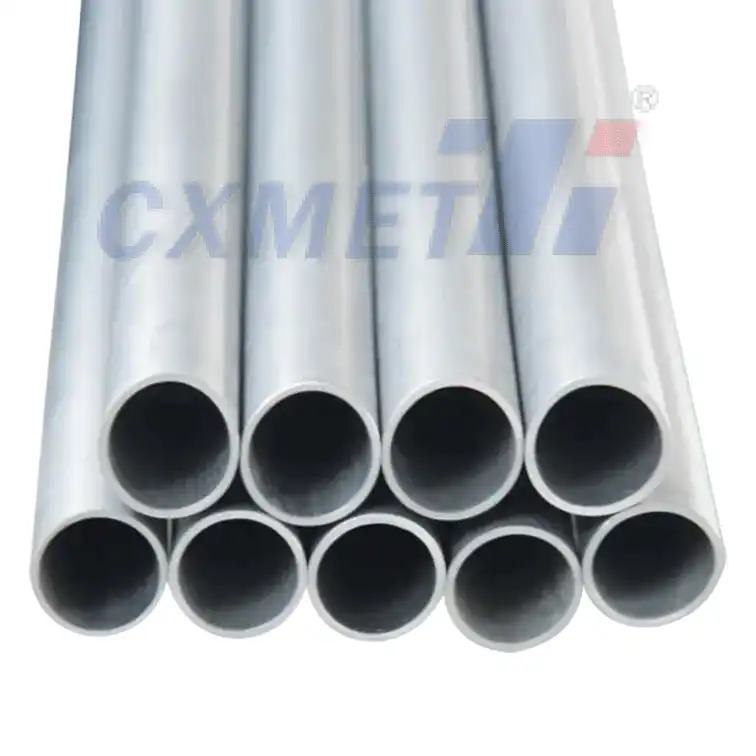
To address these challenges, manufacturers invest in advanced equipment, develop proprietary processes, and maintain strict quality control protocols. Ongoing research and development efforts focus on improving production techniques, reducing costs, and enhancing the performance of niobium tubes for various applications.
In conclusion, the manufacturing of niobium tubes is a complex process that requires a deep understanding of material science, advanced production techniques, and stringent quality control measures. As the demand for high-performance materials in industries such as superconductivity, aerospace, and nuclear energy continues to grow, the importance of efficient and reliable niobium tube production becomes increasingly evident. By addressing the challenges and continually improving manufacturing methods, producers can ensure that niobium tubes meet the evolving needs of these critical industries.
At SHAANXI CXMET TECHNOLOGY CO., LTD, we take pride in our extensive product range, which caters to diverse customer needs. Our company is equipped with outstanding production and processing capabilities, ensuring the high quality and precision of our products. We are committed to innovation and continuously strive to develop new products, keeping us at the forefront of our industry. With leading technological development capabilities, we are able to adapt and evolve in a rapidly changing market. Furthermore, we offer customized solutions to meet the specific requirements of our clients. If you are interested in our products or wish to learn more about the intricate details of our offerings, please do not hesitate to contact us at sales@cxmet.com. Our team is always ready to assist you.
